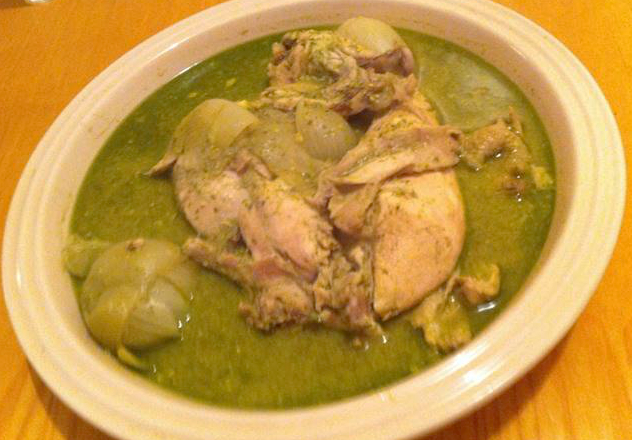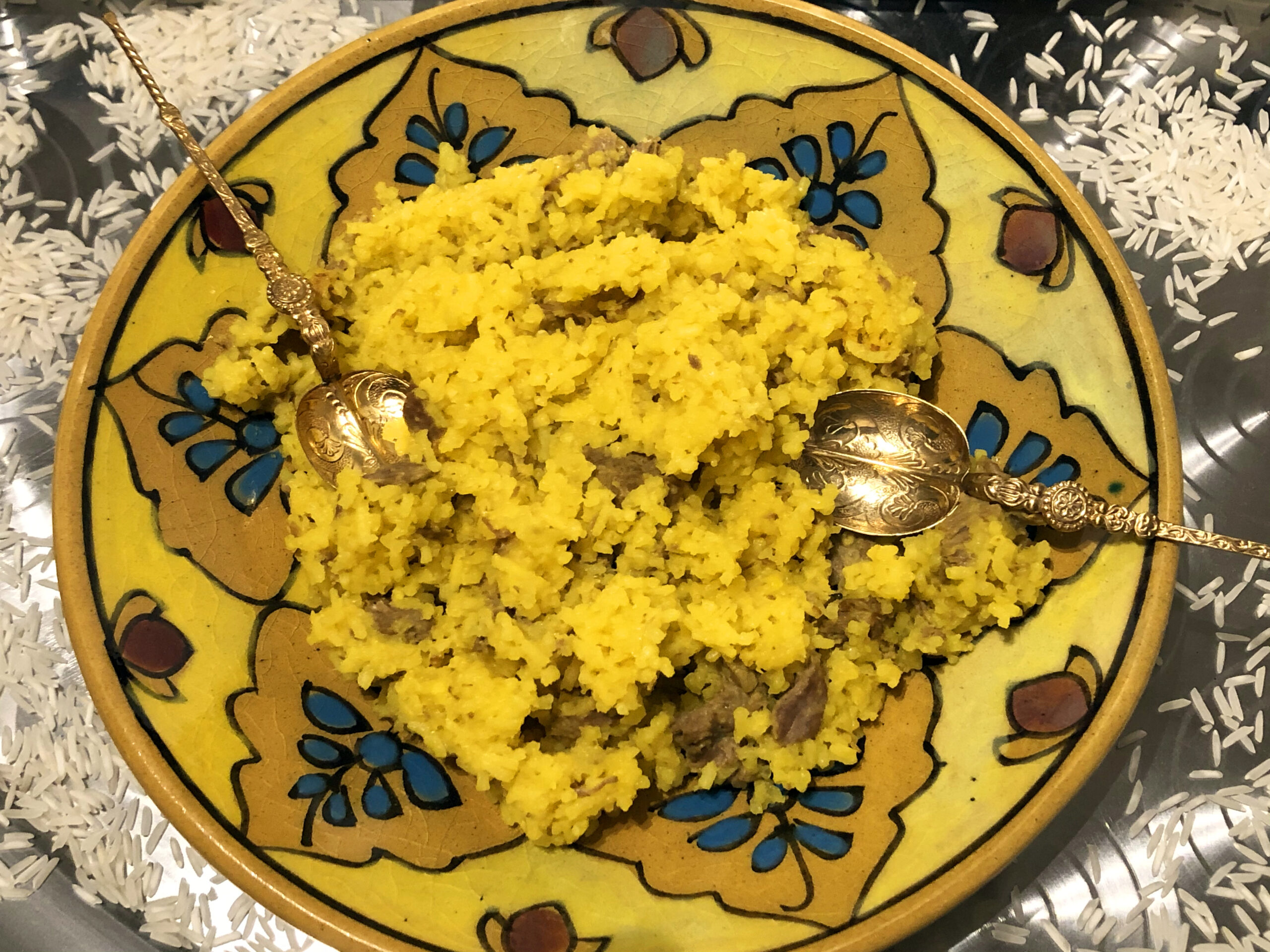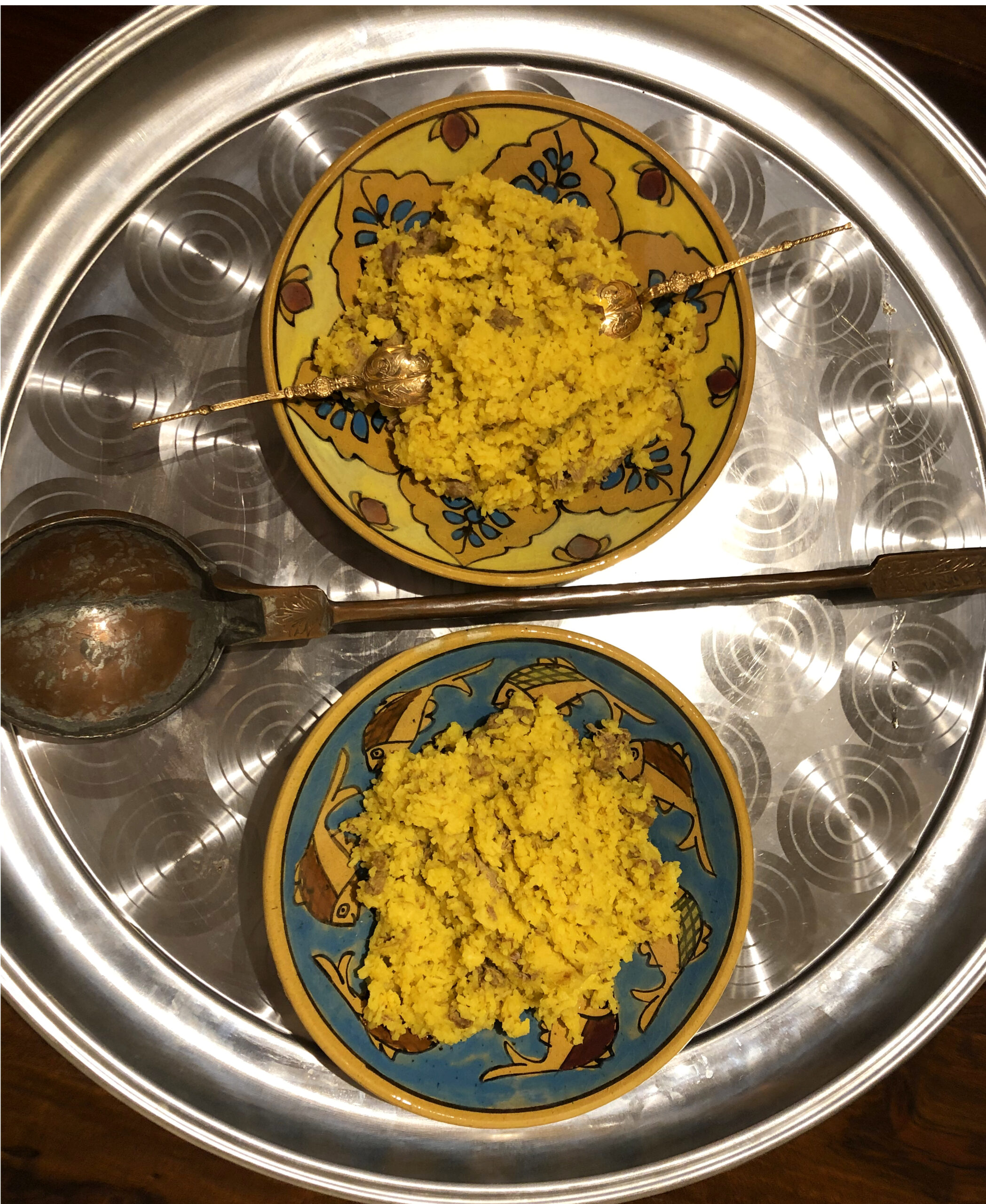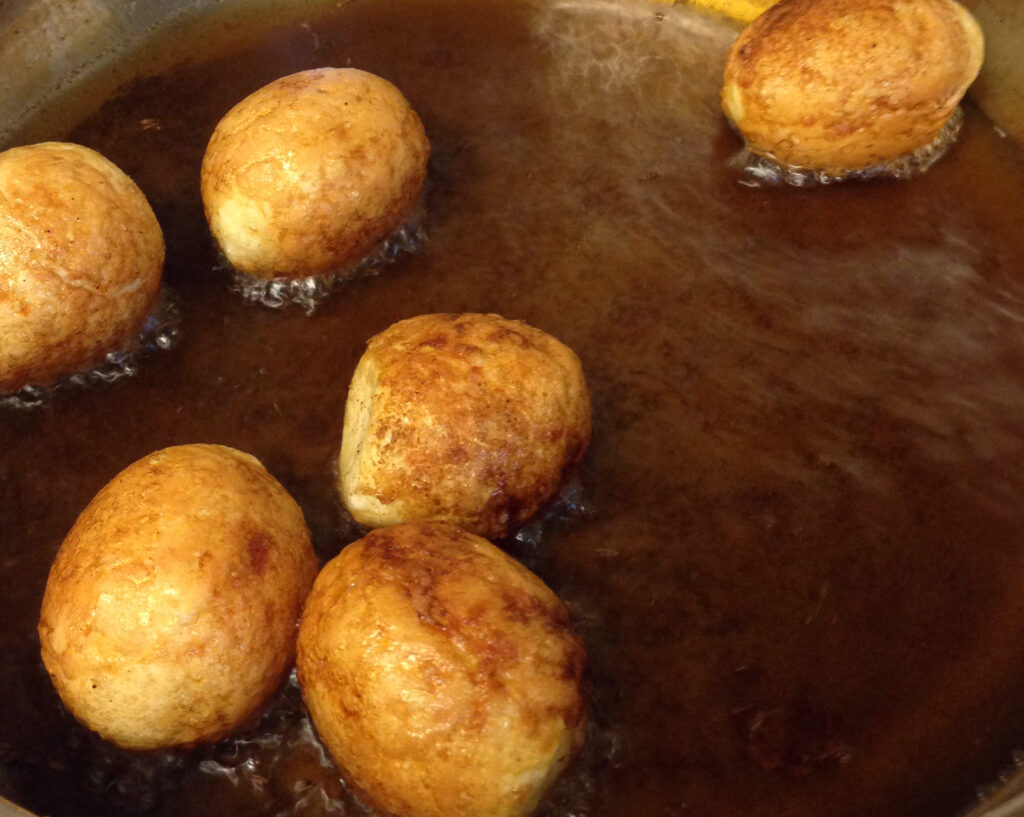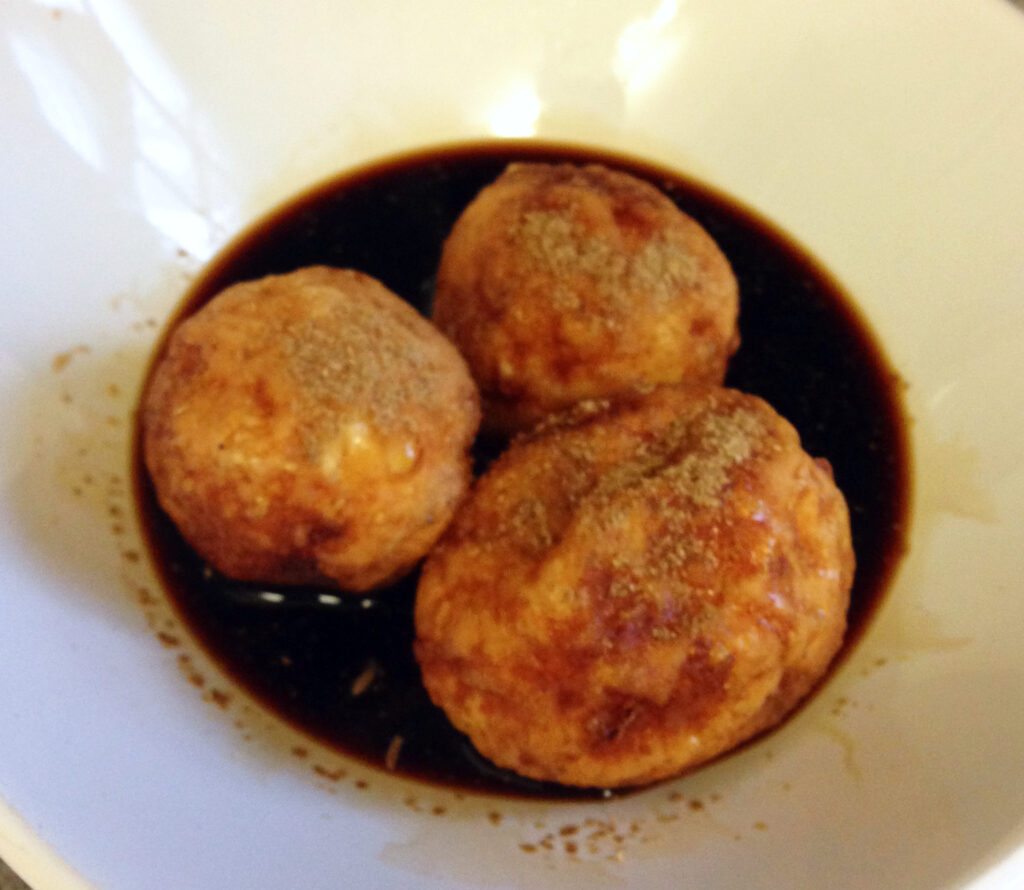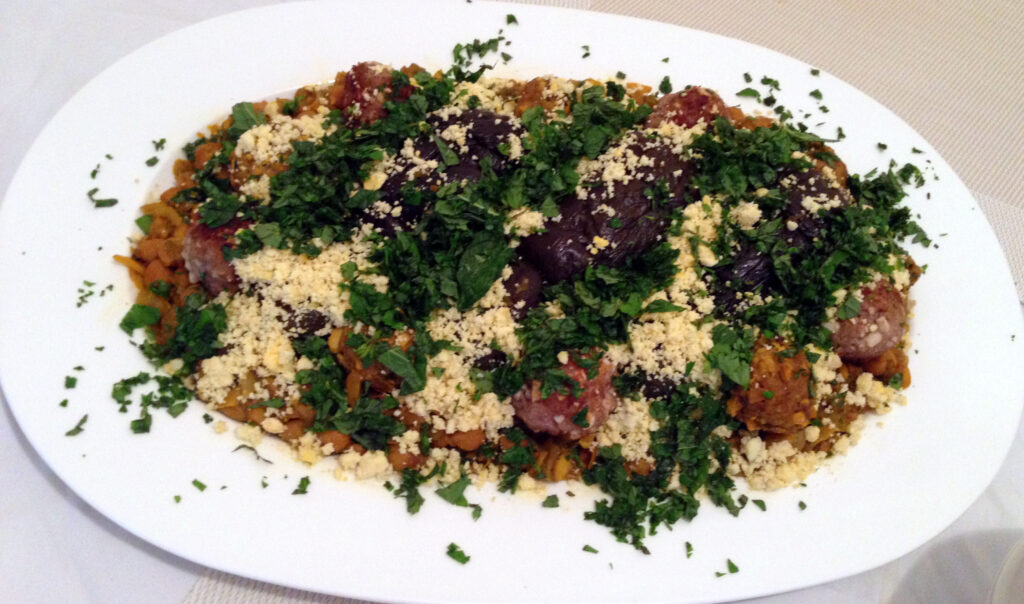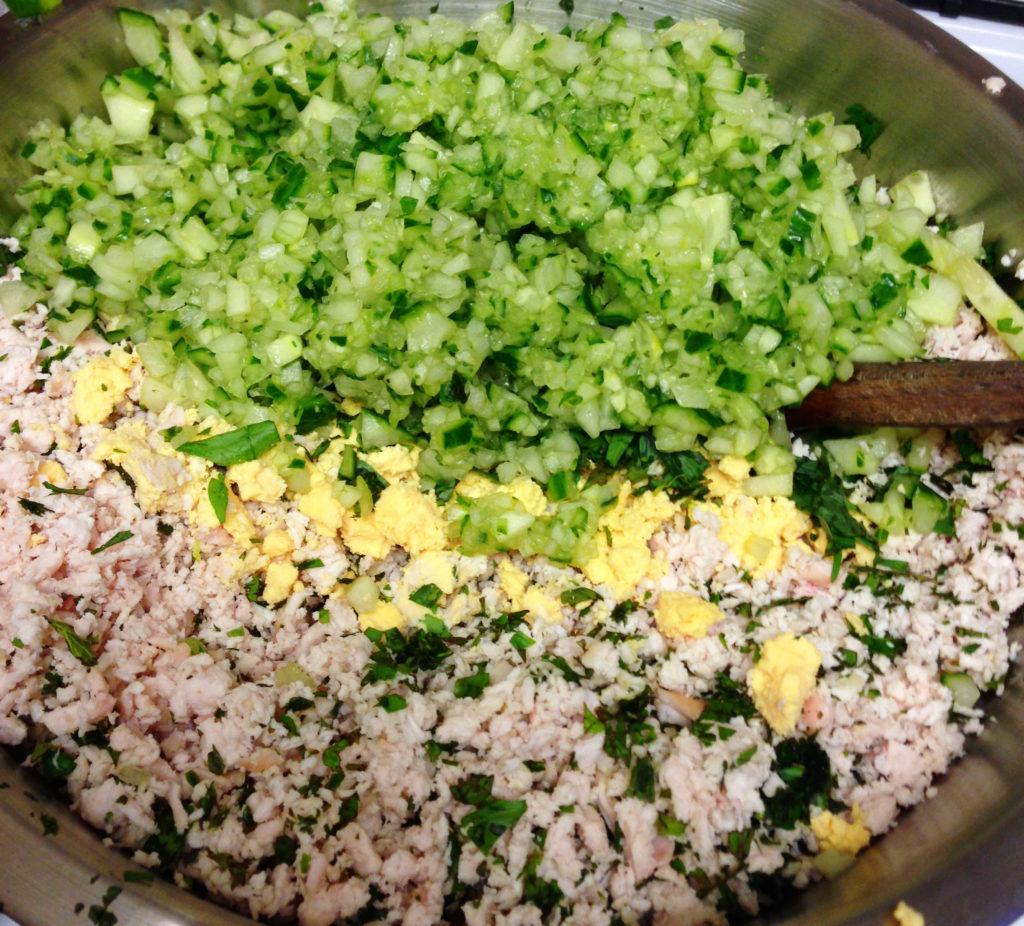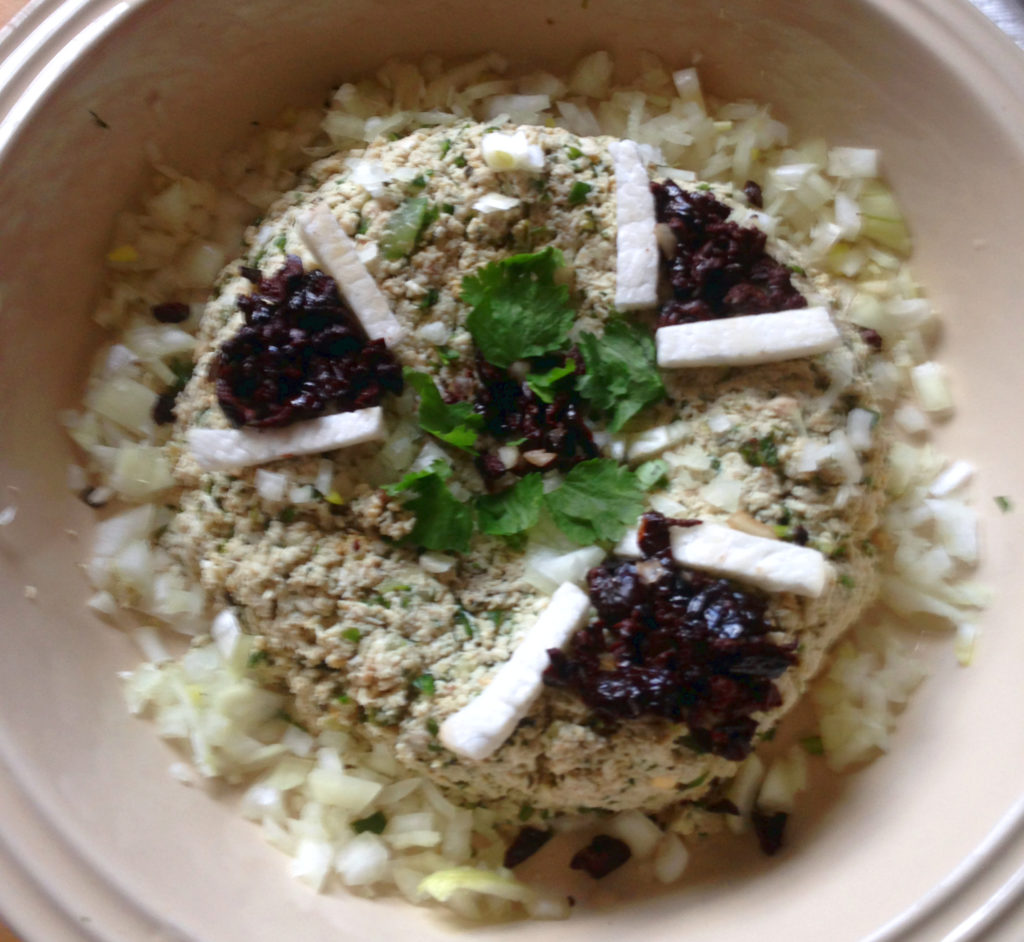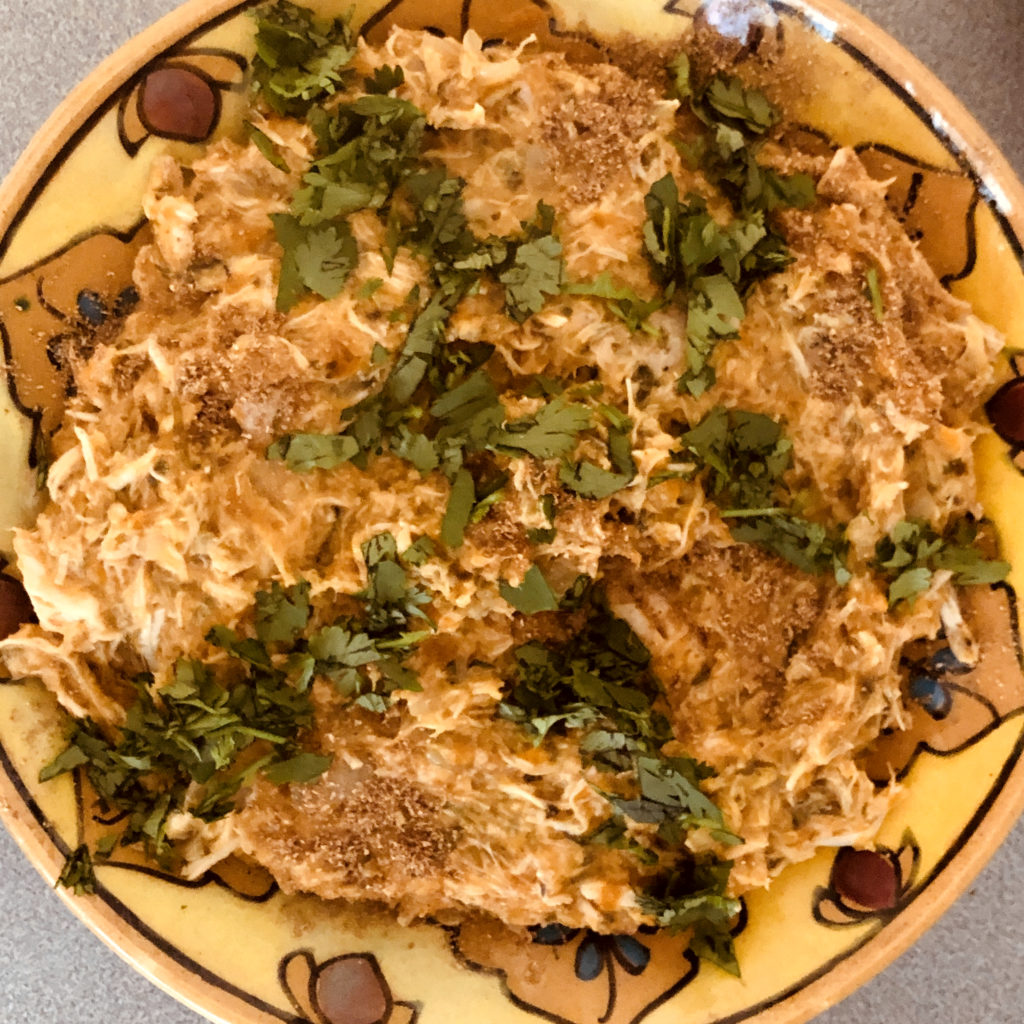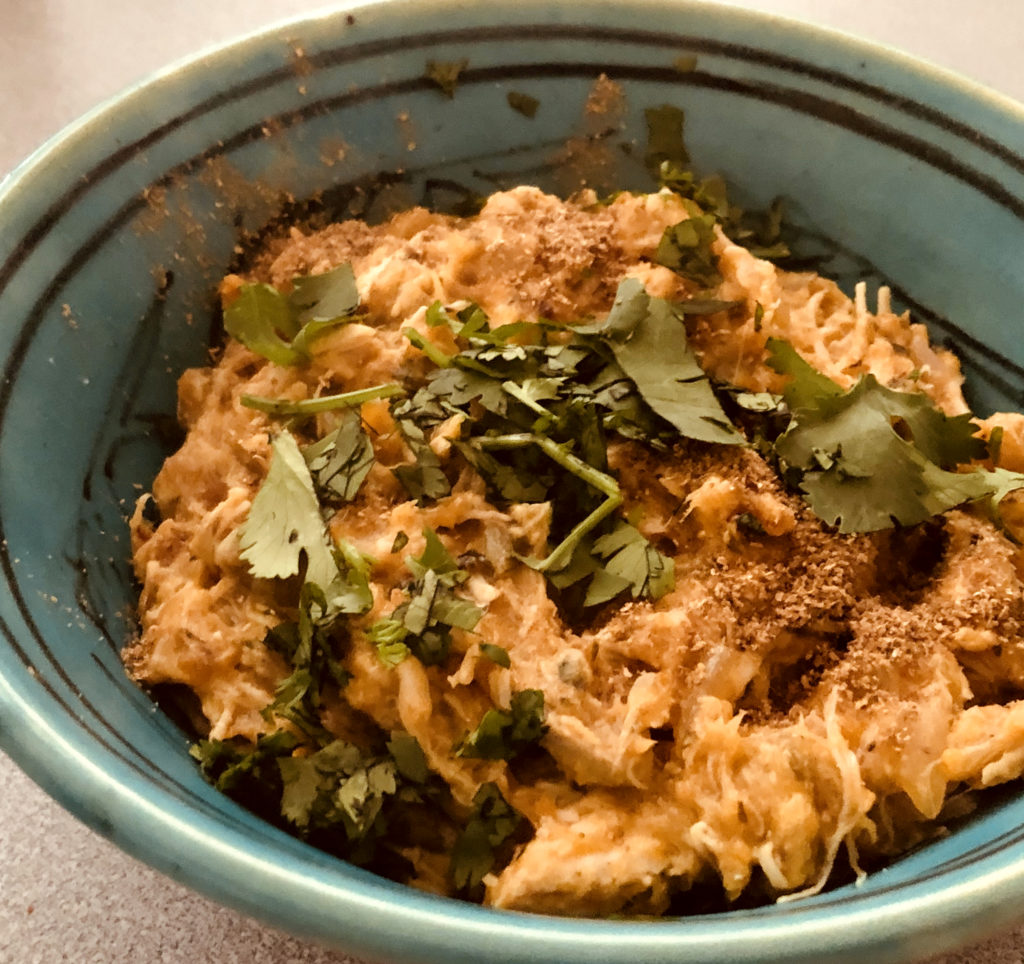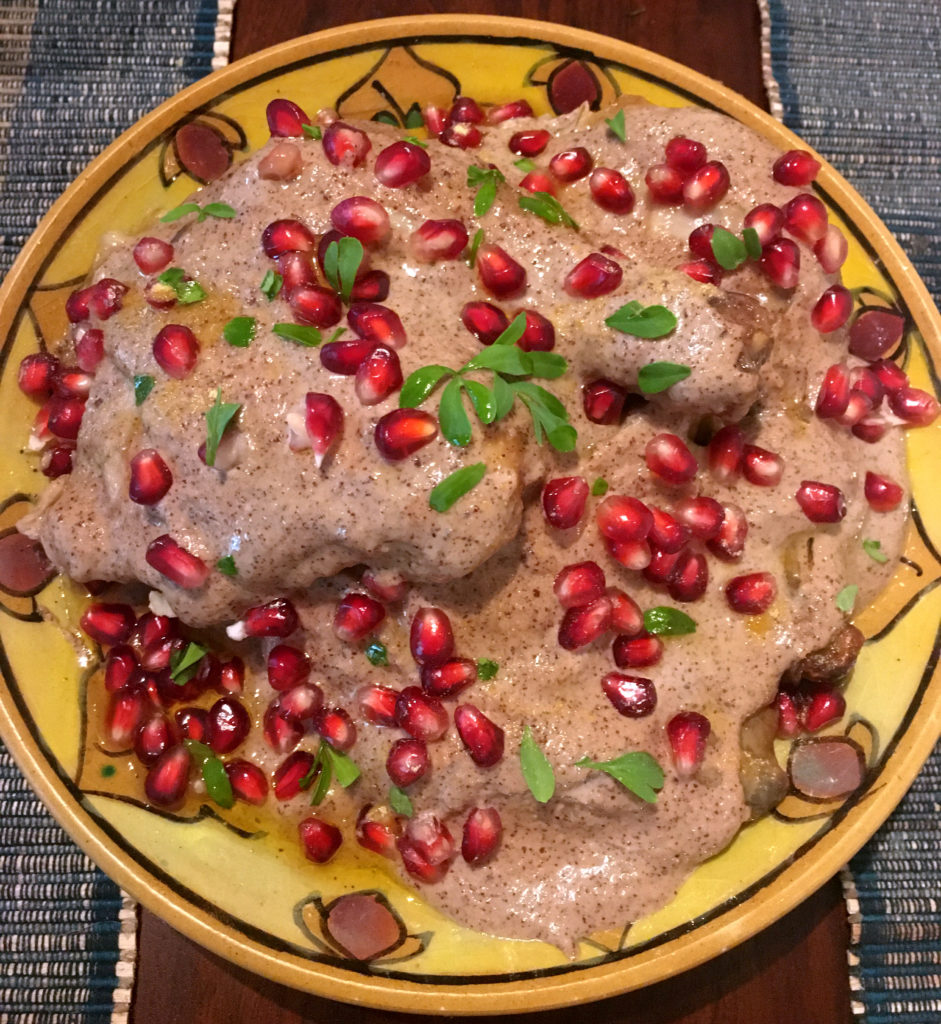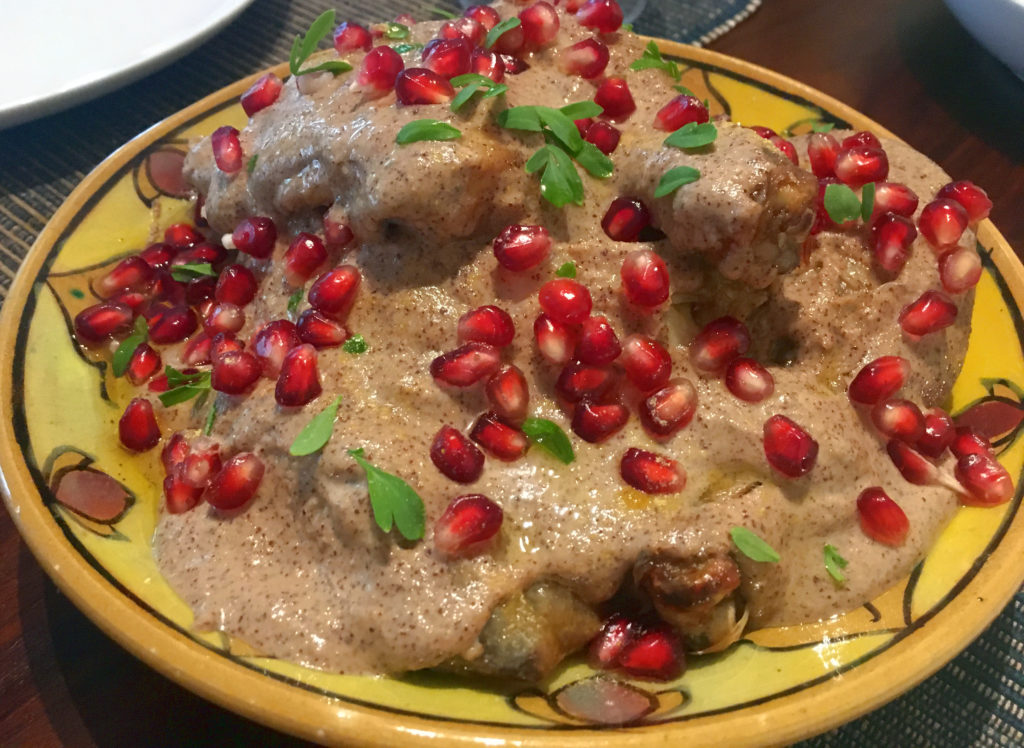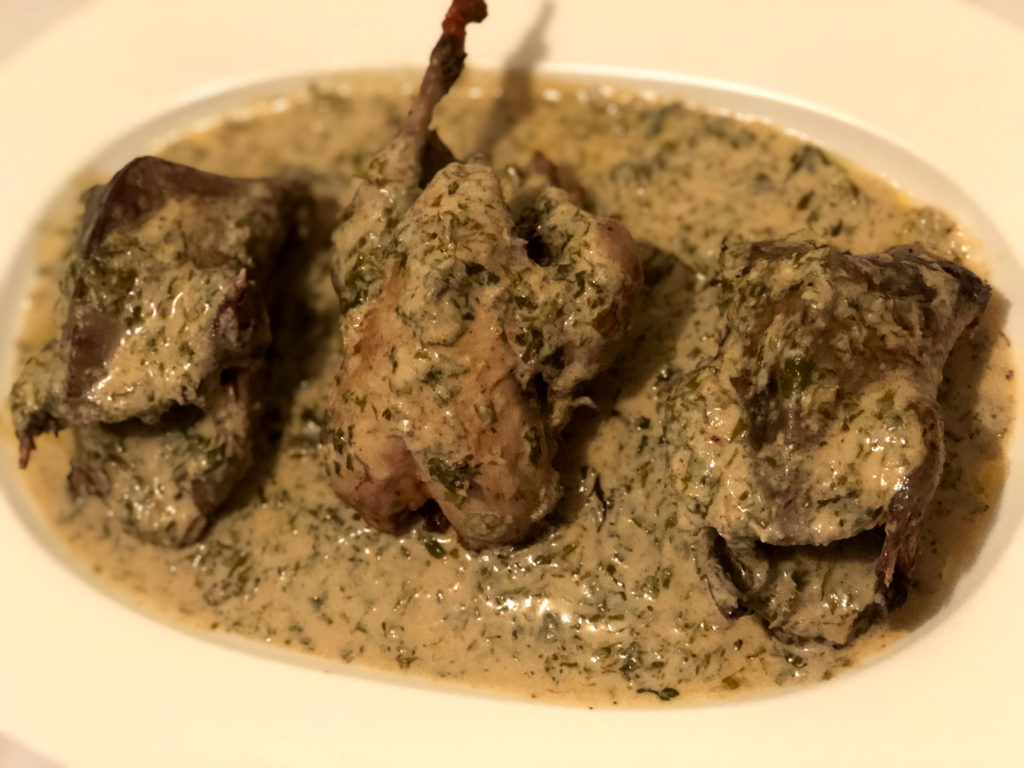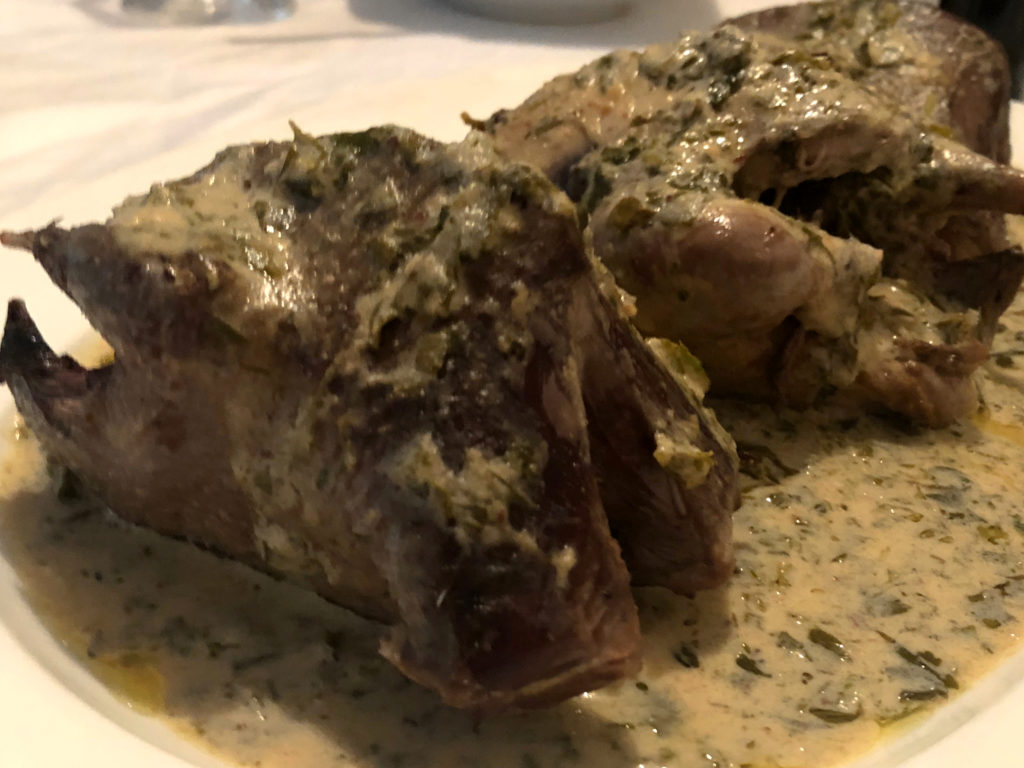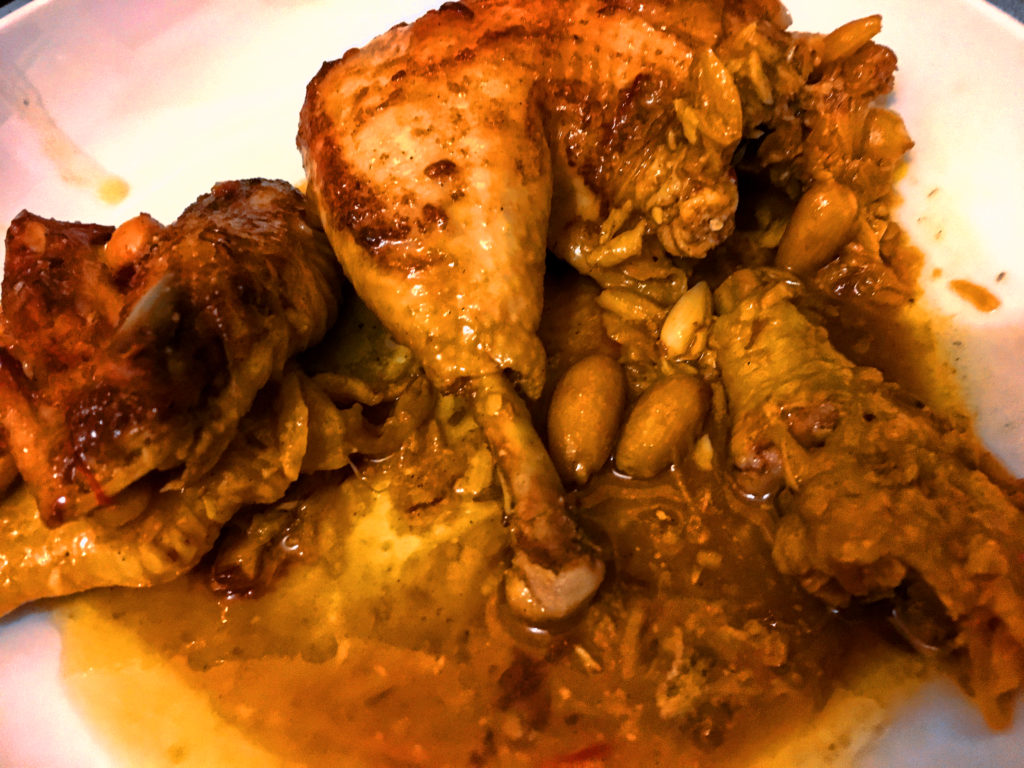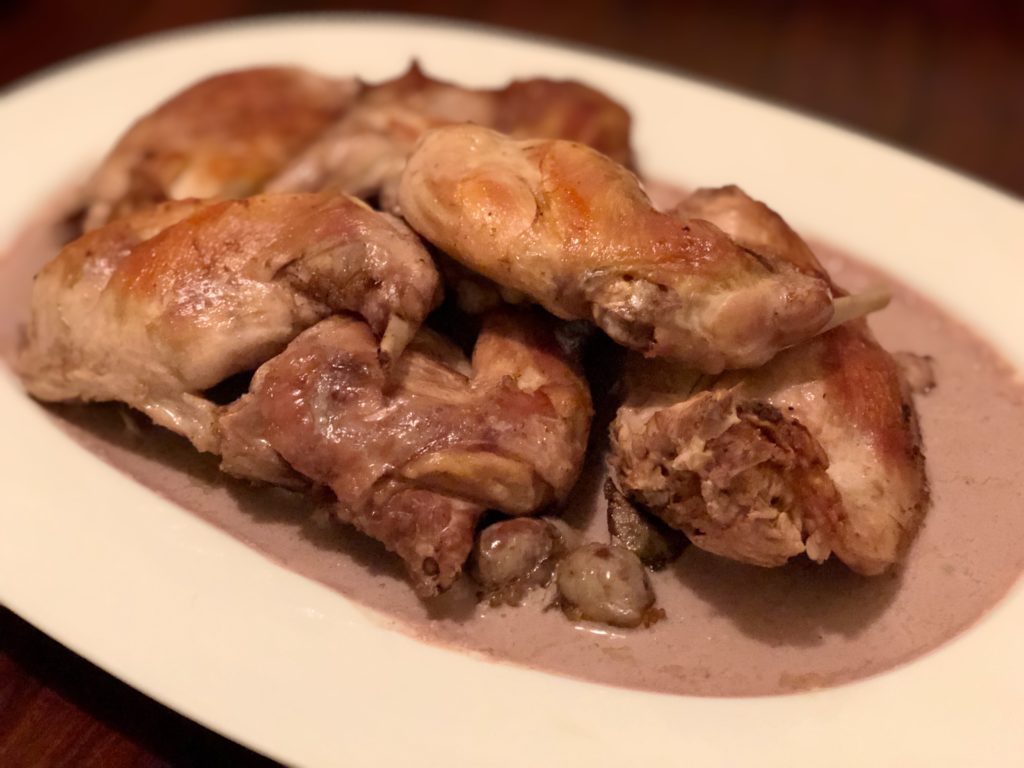The zīrbāja (or zīrbāj) was one of the most popular stews in the Abbasid cuisine, and was usually made with chicken, almonds, and saffron. Its renown was such that it is the plot in one of the stories of the Arabian Nights. This particular dish (from a tenth-century cookery book) is rather unusual in that it is coloured green by means of a sauce made of crushed parsley, rue, and pistachios. Other ingredients include spices like coriander, pepper and cassia.
